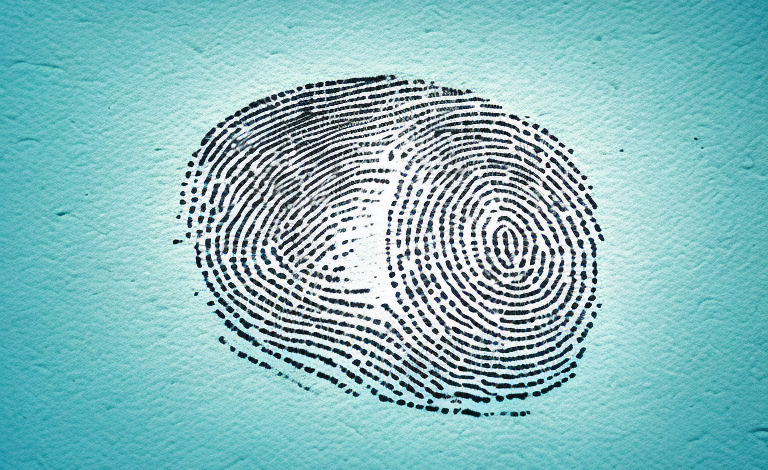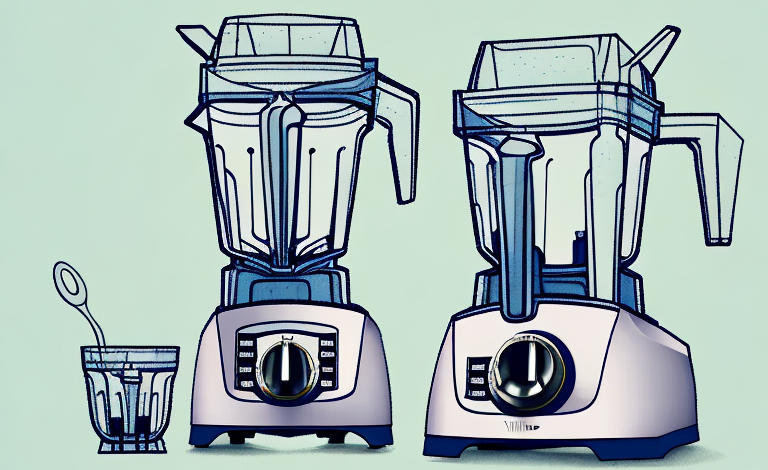Fingerprints are a unique and complex pattern that are used for identification purposes in various fields, including criminal investigations. They are formed during the fetal development and remain unchanged throughout a person’s lifetime, unless they are damaged or altered. In this article, we will explore the science behind fingerprint identification and the various factors that can impact their reliability.
The science behind fingerprint identification
Fingerprints are formed by the ridges on the surface of the skin. These ridges create unique patterns that are classified into three categories: loops, whorls, and arches. Each individual’s fingerprints are unique, and even identical twins have distinct fingerprints. This makes fingerprint analysis a valuable tool in criminal investigations, as well as other areas such as employment background checks and immigration.
How fingerprints are formed
Fingerprints start forming during the three-month stage of pregnancy and are fully formed by the sixth month. The ridges form based on random cellular movements in the skin’s basal layer. The pattern that emerges is unique and permanent, with no two people having the same fingerprint pattern.
Interestingly, fingerprints can also be affected by environmental factors such as injuries, diseases, and even the use of certain medications. For example, chemotherapy drugs can cause temporary changes in the fingerprint pattern. Additionally, identical twins may have very similar fingerprints, but they are not identical. This is because fingerprints are not only determined by genetics, but also by the unique conditions in the womb during fetal development.
The importance of fingerprints in criminal investigations
Fingerprints have been used in forensic science for over a century. They are a reliable means of identifying criminals and are admissible in court as evidence. In fact, fingerprints have been used to solve some of the most notorious crimes in history.
One of the reasons fingerprints are so valuable in criminal investigations is that they are unique to each individual. Even identical twins have different fingerprints. This means that if a fingerprint is found at a crime scene, it can be matched to a specific person with a high degree of accuracy.
Advancements in technology have also made it easier to analyze and compare fingerprints. Automated fingerprint identification systems (AFIS) can quickly search through large databases of fingerprints to find a match. This has greatly improved the speed and accuracy of fingerprint analysis in criminal investigations.
How technology has advanced fingerprint analysis
Advances in technology have greatly enhanced the ability to analyze fingerprints. Automated fingerprint identification systems (AFIS) have made it possible to quickly compare fingerprints in large databases, greatly increasing the speed and accuracy of identification. Additionally, the use of digital imaging and analysis tools has made it easier to identify prints even when they are damaged or distorted.
Another significant advancement in fingerprint analysis technology is the use of chemical treatments to enhance the visibility of latent prints. These treatments can reveal prints that were previously invisible to the naked eye, providing valuable evidence in criminal investigations. Furthermore, the development of portable fingerprint scanners has made it possible for law enforcement officers to quickly and accurately identify suspects in the field, without the need for a physical trip to a police station.
As technology continues to evolve, it is likely that even more sophisticated methods of fingerprint analysis will be developed. For example, researchers are currently exploring the use of artificial intelligence and machine learning algorithms to analyze fingerprints, which could potentially lead to even faster and more accurate identifications. Overall, the advancements in fingerprint analysis technology have greatly improved the ability of law enforcement agencies to solve crimes and bring criminals to justice.
Common ways fingerprints can be altered or damaged
While fingerprints are generally considered to be reliable indicators of identity, there are many ways they can be altered or damaged. Physical damage to the skin, such as burns or cuts, can alter the ridges on the surface and make it difficult to get a clear print. Exposure to chemicals, such as cleaning products or industrial solvents, can also cause damage to the skin and affect the clarity of a fingerprint. Additionally, age can impact the clarity of fingerprints, with older individuals often having less defined prints.
Another way fingerprints can be altered is through intentional means, such as using abrasive materials to remove the ridges or applying substances like glue or tape to the fingertips. Criminals may also attempt to alter their fingerprints through surgery or other medical procedures. It is important for law enforcement officials to be aware of these methods of fingerprint alteration and to use additional methods of identification, such as DNA testing, to confirm a suspect’s identity.
Chemicals that can affect fingerprint detection
There are several chemicals that can affect the detection of fingerprints. Substances such as oil, dirt, and sweat can obscure the ridges on the skin’s surface, making it difficult to get a clear impression. Other substances, such as superglue, can be used in the development of latent prints but require specific techniques to be used correctly.
In addition to oil, dirt, and sweat, there are other chemicals that can affect fingerprint detection. For example, certain cleaning agents can remove or alter the natural oils on the skin, making it more difficult to obtain a clear print. Similarly, exposure to extreme temperatures or humidity can cause the skin to become dry or swollen, which can also impact the quality of the print.
It is important for forensic investigators to be aware of these factors and take them into consideration when collecting and analyzing fingerprints. By understanding the potential impact of different chemicals and environmental conditions, investigators can take steps to ensure that they are obtaining the most accurate and reliable evidence possible.
Environmental factors that can impact fingerprint identification
Environmental factors can also play a role in the ability to accurately identify fingerprints. Exposure to extreme temperatures, humidity or dryness can cause the skin to change, potentially affecting the clarity of prints. Similarly, exposure to sunlight and UV rays can also alter the appearance of fingerprints.
In addition to temperature, humidity, and sunlight, other environmental factors can also impact fingerprint identification. For example, exposure to chemicals or substances such as oil, dirt, or lotion can obscure or distort fingerprints. Additionally, physical damage to the fingers, such as cuts or burns, can alter the appearance of prints and make them more difficult to identify.
The role of sweat and oils on fingerprints
Sweat and oils are important components of fingerprints. They help to create the characteristic ridges on the skin’s surface and also make the print more visible by creating contrast. However, these substances can also make it difficult to capture a clear print if they are not removed properly.
In addition to sweat and oils, other factors can also affect the quality of a fingerprint. For example, if the skin is too dry, the ridges may not be as pronounced, making it harder to capture a clear print. On the other hand, if the skin is too moist, the ridges may become distorted, also making it difficult to capture an accurate print. Additionally, certain substances such as dirt or ink can also interfere with the clarity of a fingerprint.
How to properly preserve and collect fingerprints as evidence
Proper collection and preservation of fingerprints is crucial for their use in criminal investigations. The collection process involves using specialized materials such as fingerprint powder, black magnetic powder, or cyanoacrylate fumes. These materials help to make the prints more visible and easier to capture. Once the prints have been collected, they must be properly preserved and stored to prevent any damage or contamination.
It is important to note that the surface on which the fingerprints are found can also affect the collection process. Non-porous surfaces such as glass or metal are easier to collect prints from, while porous surfaces such as paper or fabric may require additional techniques such as ninhydrin or silver nitrate. It is also important to collect prints as soon as possible after they are discovered, as they can deteriorate over time and become more difficult to capture accurately.
The future of fingerprint identification technology
The use of fingerprint technology is likely to continue to advance in the future. Newer technologies may enable more accurate capture and identification of prints, as well as faster processing and matching of prints in large databases.
Additionally, there is ongoing research into the use of fingerprints for more than just identification purposes. Some experts believe that fingerprints could be used to detect medical conditions, such as high blood pressure or diabetes, by analyzing the patterns and ridges on a person’s fingertips. This could potentially revolutionize the healthcare industry and lead to earlier detection and treatment of various illnesses.
Famous cases where fingerprint analysis played a key role in solving the crime
Several high-profile crimes have been solved using fingerprint analysis. Perhaps the most famous case involves the kidnapping and murder of Charles Lindbergh’s son in 1932, where a suspect was identified and convicted based on fingerprints found on a ransom note. Other notable cases include the assassination of President Kennedy, where a fingerprint was found on a rifle, and the Unabomber case, where fingerprints were used to identify and arrest the suspect.
In addition to these well-known cases, fingerprint analysis has played a crucial role in solving countless other crimes. For example, in 2016, a man was arrested and charged with the murder of a jogger in New York City after his fingerprints were found on the victim’s phone. Similarly, in 2019, a suspect was identified and arrested for a series of burglaries in California after his fingerprints were found at the crime scenes.
Fingerprint analysis has also been used to exonerate individuals who were wrongfully convicted of crimes. In 2003, a man named Brandon Mayfield was arrested and accused of involvement in the Madrid train bombings based on a fingerprint match. However, it was later discovered that the match was incorrect, and Mayfield was released from custody. This case highlighted the importance of ensuring the accuracy of fingerprint analysis and the potential consequences of errors in the criminal justice system.
Myths and misconceptions about fingerprints
There are several myths and misconceptions surrounding fingerprints. One common myth is that wearing gloves will prevent leaving fingerprints behind, but in reality, the oils and sweat on the hands can leave behind a print on the inside of a glove. Another myth is that there is such a thing as a perfect fingerprint match, but in reality, there can be minor variations in even identical prints.
In conclusion, fingerprints are a valuable tool for identification in many fields, but their reliability can be impacted by various factors. As technology and techniques continue to advance, the use of fingerprints in crime-solving and other areas will likely continue to grow.
It is also a common misconception that fingerprints never change throughout a person’s life. In reality, factors such as aging, injury, and certain medical conditions can alter the appearance of fingerprints over time. This is why it is important for law enforcement and other professionals to regularly update their fingerprint databases and compare new prints to previous ones.



